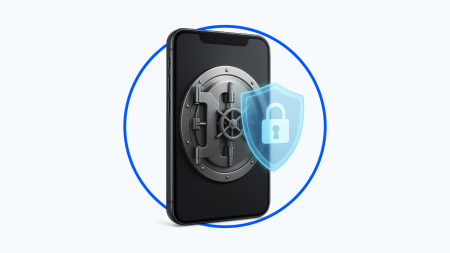Key takeaways
- Getting the right credit card starts with knowing your credit score, which can help you narrow down options you’re most likely to be approved for.
- Understanding credit card terms and what you’re looking to get out of a card can further help you compare and decide on a specific card.
- If you’re still not sure, look for cards that offer preapproval, which can help you understand your approval odds without a hit to your credit score.
Credit cards are useful tools for building credit, offering greater security than debit cards and the potential to earn rewards on everyday purchases. But if you’ve been denied recently, it can be tough to know where to begin. The good news: by understanding what issuers look for and taking a few key steps, you can improve your chances of getting approved next time. Here’s how to get a credit card and how to prepare.
1. Know your credit score and what it means
Your credit score is a three-digit number representing your credit health that issuers use to determine your creditworthiness or how likely you are to repay a loan. It’s important to know your credit score before you submit a credit card application. That’s because, while a good credit score can open up the strongest rates and lowest fees, a poor credit score can result in a credit card issuer denying you for a card — in fact, it’s much more likely to happen the lower your credit score is.
Sixty-four percent of those with fair or poor credit who have applied for a loan or financial product since December 2023 have been denied, while only 29 percent of those who have applied with excellent credit have been denied, according to Bankrate’s 2025 Credit Denial Survey. This statistic applies to lending products beyond just credit cards, but still shows the importance of applying when your credit score is at its best.
Credit scoring systems: FICO vs. VantageScore
The two most popular credit scoring systems are FICO and VantageScore. Each provides scores ranging from 300 to 850, with higher scores indicating stronger credit, though you’ll find differences in how they calculate these scores, and even how financial institutions use them.
How to get a copy of your credit report and credit score
You can get a free credit report from TransUnion, Equifax and Experian every week from AnnualCreditReport.com, the only federally authorized site that offers these. These reports won’t include your credit score; rather, think of the report as your credit history and the score as your grade.
To check your score, try your bank or card issuer. Many major issuers allow you to monitor and track your credit score through an online account or app. Tools like Capital One’s CreditWise, Chase’s Credit Journey or American Express’s MyCredit Guide often offer free access, sometimes even for non-customers.
Knowing your score helps you apply for credit cards with credit score requirements you can reasonably meet. For instance, if your score is poor, avoid applying for cards that require good to excellent credit and focus on cards designed for lower scores.
What to do if you don’t have a credit score
If you’re new to credit, you may still qualify for a card — especially secured credit cards that don’t require prior credit history. These can help you build your score over time. As your credit improves, you’ll gain access to better cards with rewards like cash back, points or miles for everyday spending.
2. Compare cards against your financial needs
Once you know what cards you might qualify for based on your credit score, it’s time to think about what your needs are for a credit card. Are you looking to earn cash back or travel rewards? Or maybe building credit first is your highest priority? You can find a credit card to fit your specific needs, budget and spending habits.
What to consider when choosing a credit card
Each card also comes with different interest rates, fees, offers, benefits and terms. Here are questions to ask yourself as you’re comparing credit cards:
- Do you mind paying an annual fee? If a card has an annual fee, consider whether the annual fee is worth it and the rewards you’ll earn will justify the cost. Many rewards cards charge between $95 and $600+ per year, so it’s important to weigh the potential value you’ll get in return.
- Do you plan to carry a balance? Paying off your card monthly is ideal, but if you plan to carry a balance, your interest rate will impact your payments. Look for cards with low interest or a 0 percent intro APR for 12 to 21 months to reduce interest while you pay it down.
- Do you want to earn rewards? If you have good to excellent credit, you may qualify for top rewards cards that offer cash back, points or miles on everyday purchases like groceries, gas and dining and more — plus a flat rate on other spending. Many also include sign-up bonuses when you meet a minimum spend within a set time frame.
3. Learn about credit card terms
You’ll bump into many credit card terms when applying for a card, and it’s a good idea to understand what they mean before you apply. Here are some common credit card terms you’ll see and what they mean:
4. See if you can be preapproved
Before applying for a card, check if the issuer offers preapproval. While not a guarantee, it gives you a good idea of your approval odds without a hard credit check. Free tools like Bankrate’s CardMatch use a soft pull to show personalized offers without affecting your credit score.
5. Prepare for a dip in your credit score
Most credit card applications trigger a hard inquiry (the card issuer will pull your credit report to check your creditworthiness), which can cause a slight, temporary dip in your credit score and stay on your report for up to two years.
If you’ve recently applied for a credit card and the issuer denied your application, be mindful of when you apply for your next credit card. One inquiry isn’t a big deal, but multiple applications in a short time can raise red flags. To avoid this, try to wait at least three months between applications.
6. Put together a repayment strategy
Having a credit card comes with the responsibility of making payments. Making late payments or only minimum payments opens you up to interest charges and fees, in addition to potentially hurting your credit score. For that reason, the best way to pay your credit card bill is on time and in full every month.
Estimate your monthly payments
Before applying for a credit card, budget for at least the minimum payments to stay in good standing. Also, aim to keep your credit utilization ratio below 30 percent, as using more than 30 percent can hurt your credit score. For example, with a $10,000 credit limit, try to keep your balance under $3,000.
Avoid late payments with autopay
A single late payment can drop your credit score by over 100 points, but it ultimately depends on your credit history and how late the payment is. Most issuers don’t report late payments until they’re 30+ days overdue, so paying in full within that window may prevent damage. But “in full” is key, because if you pay only a partial payment late, your issuer is likely to report a delinquency to the credit bureaus.
To avoid missed payments and to make sure you pay the full amount due, set up autopay, as it simplifies your finances and protects your credit.
7. Gather the necessary information
Before you apply, make sure you know the information you’ll need for your application. Early access to this information will help the process go more smoothly, and you’ll have a better idea of your chances of approval.
Common personal and financial information you’ll need to apply includes your:
- Full legal name
- Date of birth
- Current address
- Social Security number
- Annual income
Other information you may need
Be ready to provide extra details if the issuer requests them, such as how long you’ve lived at your current address, whether you rent or own, housing costs, employment info, income sources and assets. You can also include your spouse’s or partner’s income if you reasonably have access to it. For business credit cards, you may apply with an employer identification number (EIN), though most issuers still require your Social Security number.
8. Choose a method to apply and follow each step
When it’s time to apply, there are a few different ways you can do so:
- Issuer’s site. This is the easiest way to apply, allowing you to submit your information and required details online. How long it takes to be approved for a credit card varies, but you will likely receive the fastest response with this method. You may even get instant approval and use of a digital card until your physical card arrives in the mail.
- By mail. If you receive a physical card offer, you can mail your completed card application to the issuer. Card approval with this method can take a few weeks, depending on the issuer. And you’ll have to wait for your credit card to arrive by mail.
- Over the phone. Though not as common a method, you can call an issuer and apply for a card during business hours. Approval will be faster than by mail, though you could find yourself waiting on hold throughout the process.
- In person. If an issuer operates a physical branch, you may be able to go to that location and apply for a card you’re interested in. Search online or call the number on your card offer to learn whether this is an option.
The bottom line
Getting a new credit card can be exciting, but the application process can feel stressful — especially after a past denial. Reviewing your credit score and report beforehand can help you gauge your approval odds. If your credit is in good shape, approval is more likely. you may need to focus on building a stronger credit history until it’s a better time to apply for a credit card.
Why we ask for feedback
Your feedback helps us improve our content and services. It takes less than a minute to
complete.
Your responses are anonymous and will only be used for improving our website.
Help us improve our content
Read the full article here









